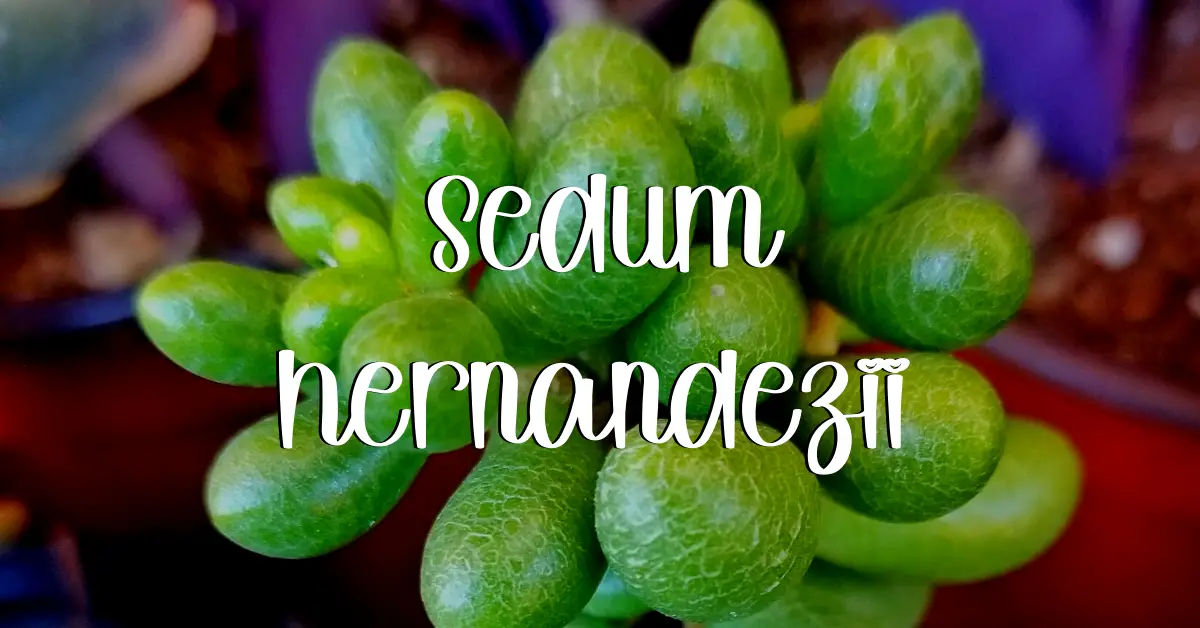Sedum hernandezii, commonly known as Hernandez’s Sedum, is a unique and beautiful succulent that is highly sought after by gardeners. With its compact size, vibrant foliage, and low maintenance requirements, it has become a popular choice for both indoor and outdoor cultivation. In this comprehensive care guide, we will explore all aspects of Sedum hernandezii, including its appearance, preferred growing conditions, propagation methods, common pests, and potential problems. Whether you are a seasoned gardener or a succulent enthusiast, this guide will provide you with all the information you need to successfully care for Sedum hernandezii.

Source: Etsy
Dig in!
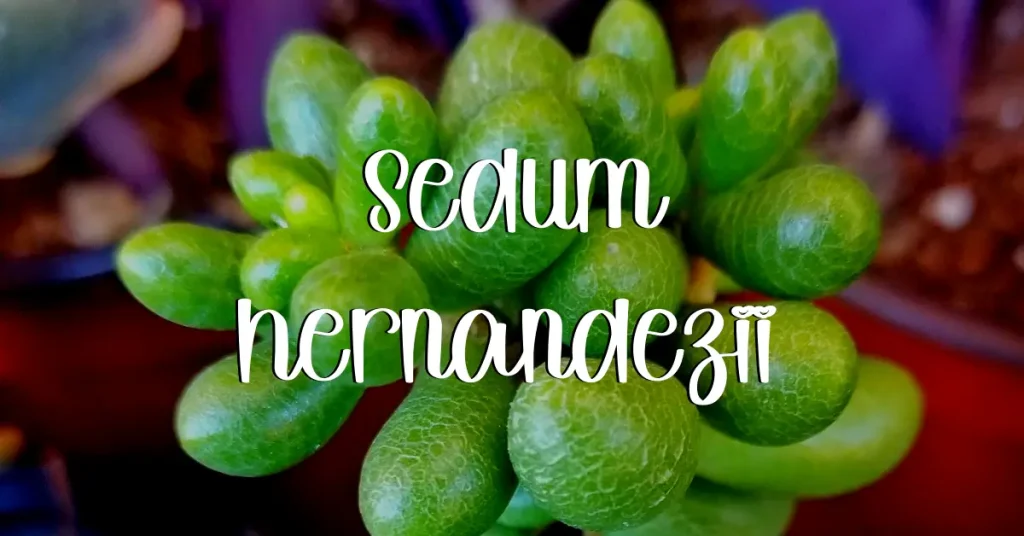
Plant Description
Sedum hernandezii’s robust brown stems, which can reach an impressive diameter of 0.4 inches, are covered in fine hairs, adding to its unique appearance. Its bright green leaves grow in four distinct columns and have a crackled texture, contributing to the plant’s overall appeal and charm. The texture of the leaves is probably one of my favorite things about Sedum hernandezii.
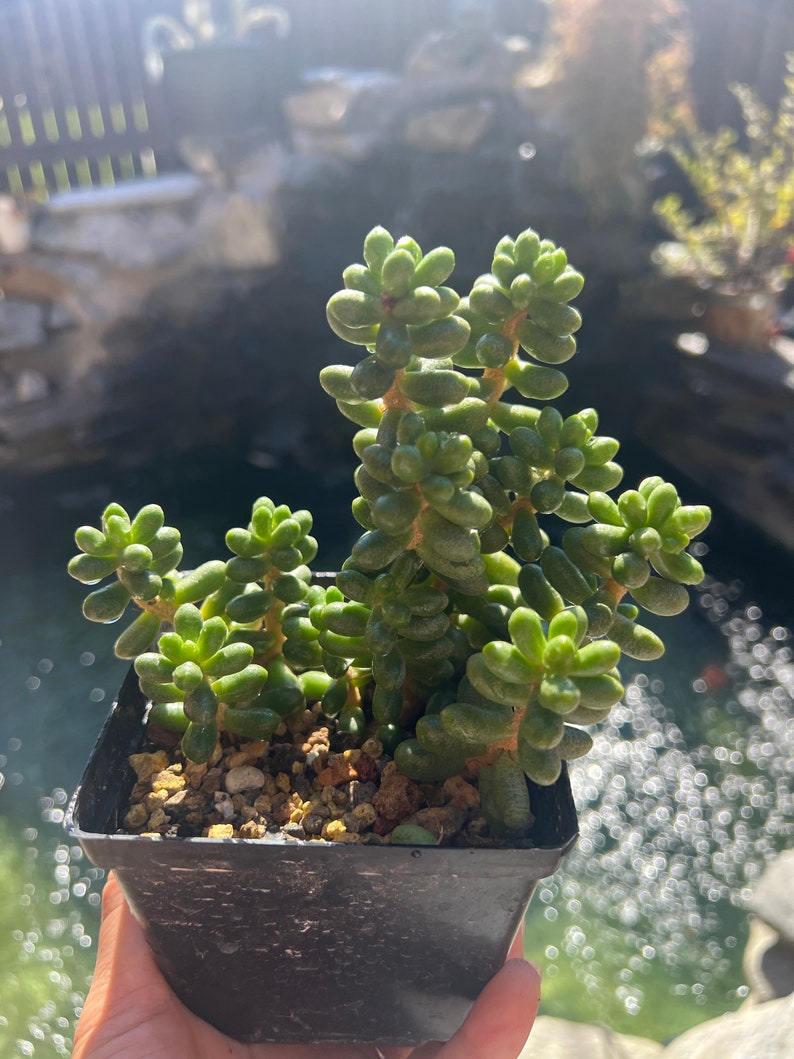
Source: Etsy
Flowering and Blooming
Sedum hernandezii produces small star-shaped flowers that are a vibrant shade of yellow. The flowers typically bloom in late spring or early summer and continue to bloom intermittently throughout the season. However, it’s important to note that flowering may vary depending on the growing conditions and care provided to the plant.
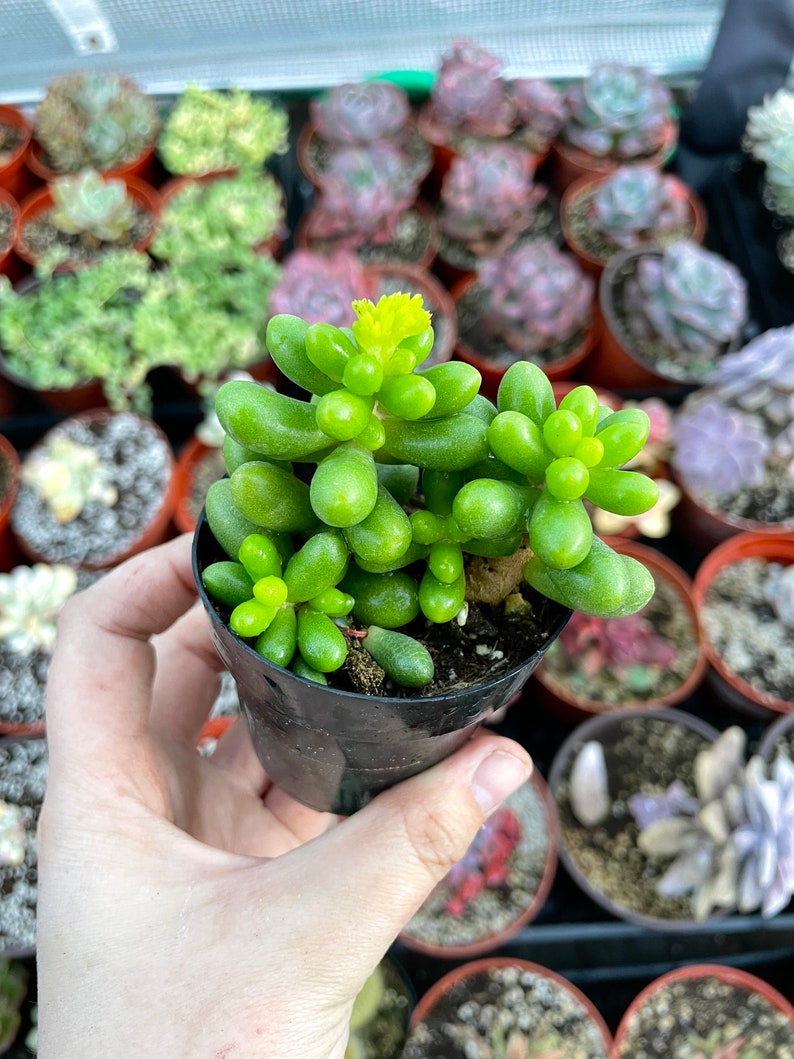
Source: Etsy
Sedum hernandezii Care Requirements
Light
Sedum hernandezii thrives in bright, indirect light. It is best to place the plant in a location where it can receive at least 4-6 hours of sunlight per day. However, it is important to protect it from intense afternoon sun, as it can scorch the leaves. If growing indoors, placing Sedum hernandezii near a south-facing window or using artificial grow lights can help provide the necessary light requirements.
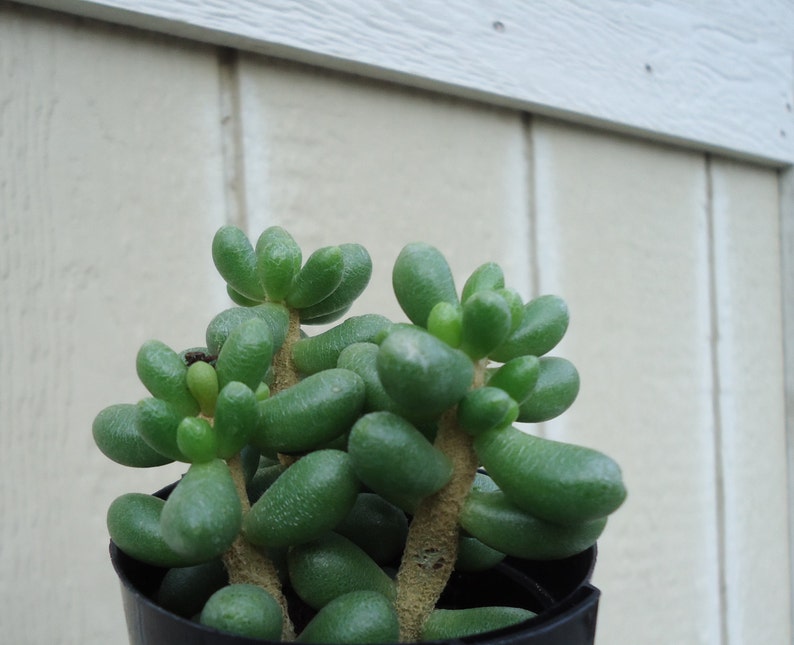
Source: Etsy
Watering
As a succulent, Sedum hernandezii has low water needs and is highly drought-tolerant. It is important to allow the soil to dry out completely between waterings to prevent overwatering, which can lead to root rot. During the active growing season (spring and summer), watering once every 1-2 weeks is usually sufficient. In winter, when Sedum hernandezii goes semi dormant, reduce watering frequency to once every 2-4 weeks.
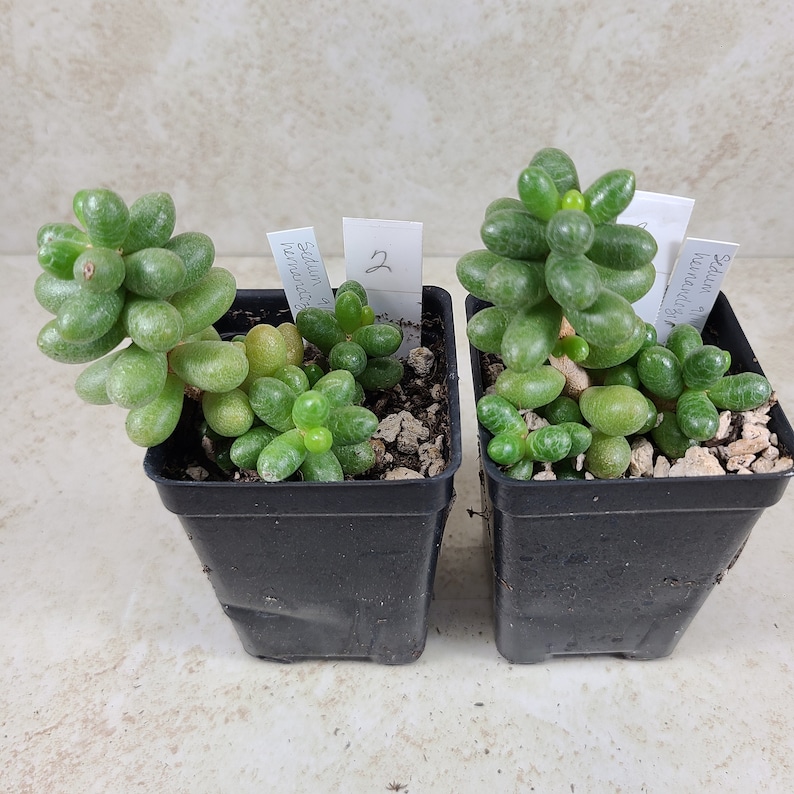
Source: Etsy
Soil
Sedum hernandezii thrives in well-draining soil that mimics its natural habitat. A mix of succulent or cactus potting soil, perlite, and coarse sand is ideal for providing adequate drainage. This type of soil prevents water from sitting around the roots, reducing the risk of root rot.
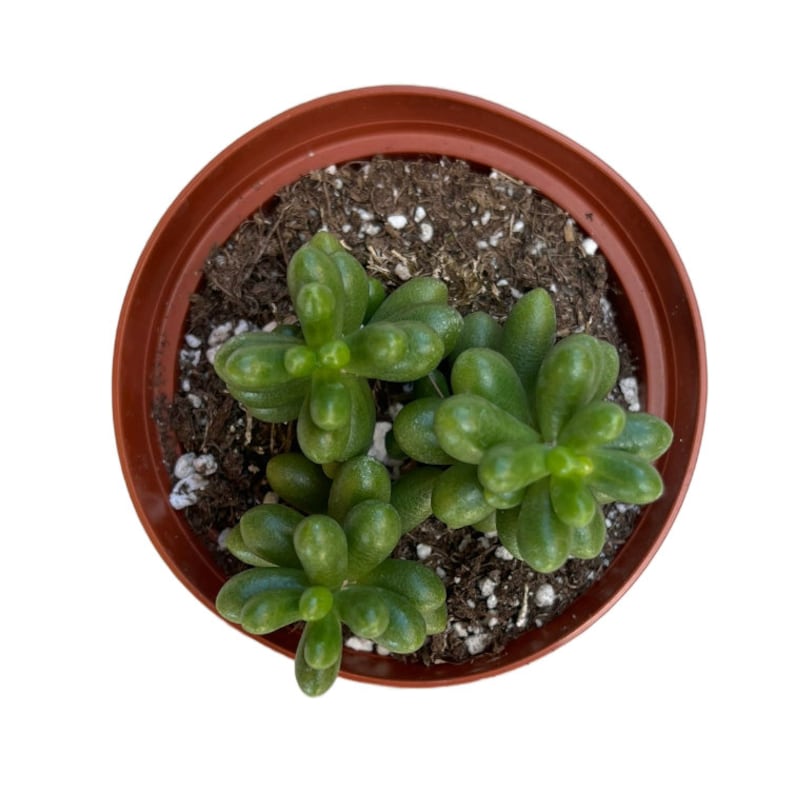
Source: Etsy
Temperature
Sedum hernandezii is native to Mexico and can tolerate a wide range of temperatures. It prefers moderate temperatures between 60-75°F (15-24°C). However, it can withstand temperatures as low as 30°F (-1°C) for short periods, making it suitable for outdoor cultivation in USDA hardiness zones 9-11.
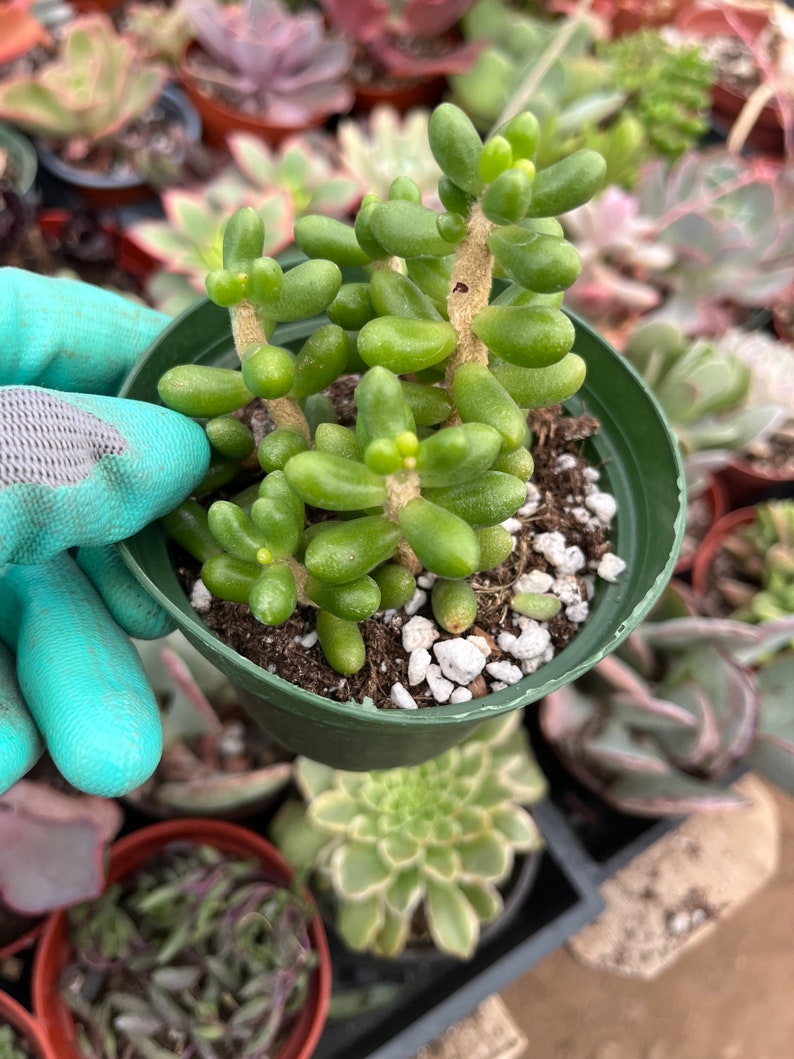
Source: Etsy
Fertilizer
Sedum hernandezii is a relatively low-maintenance plant and does not require frequent fertilization. During the active growing season, you can feed the plant with a balanced, water-soluble fertilizer diluted to half the recommended strength. Apply the fertilizer once every 2-4 weeks to provide the necessary nutrients for healthy growth. Avoid fertilizing Sedum hernandezii during the winter months when the plant is dormant.

Succulent fertilizer available to purchase on Etsy.
Repotting
Sedum hernandezii has a slow growth rate and does not require frequent repotting. Repotting every 2-3 years or when the plant has outgrown its current container is usually sufficient. When repotting, choose a container that has drainage holes to prevent waterlogged soil. Use a well-draining succulent or cactus potting mix and gently remove the plant from its old container, taking care not to damage the roots. Place Sedum hernandezii in the new container, fill with fresh soil, and lightly compact it around the roots.
When you’re rooting or transplanting your succulents and cacti, use SUPERthrive to help reduce the chance of transplant shock and grow a strong root system.
Propagation
One of the easiest ways to propagate Sedum hernandezii is through stem or leaf cuttings. To propagate from stem cuttings, select a healthy stem and make a clean cut just below a leaf node. Allow the cutting to dry and callous for a few days before placing it in well-draining soil. Keep the soil lightly moist and provide bright, indirect light. Roots will start to develop within a few weeks, and the new plant can be treated as a mature Sedum hernandezii.
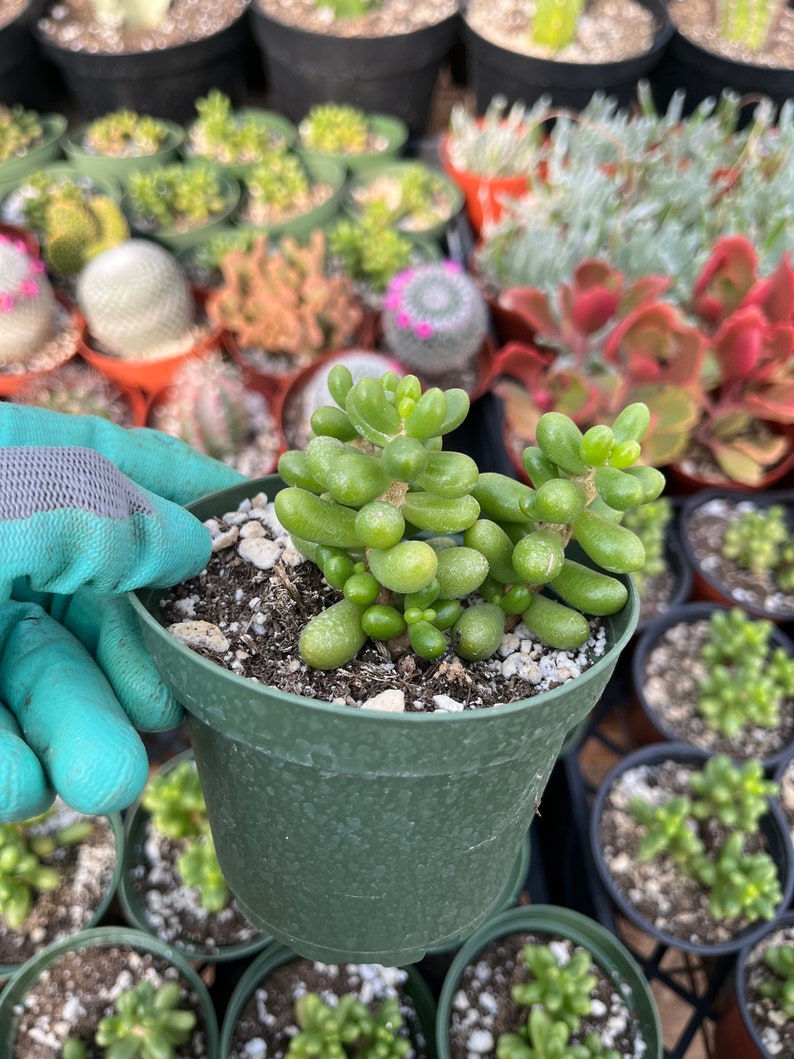
Source: Etsy
Pests
Sedum hernandezii is generally resistant to pests and diseases. However, it may occasionally attract common succulent pests such as mealybugs or aphids. If you notice any signs of infestation, such as white cottony masses or small insects on the leaves, isolate the affected plant and treat it with an appropriate insecticide or by wiping the leaves with a mild soap and water solution. Regularly inspecting your plants and maintaining good hygiene practices can help prevent pest infestations.
As an Amazon Associate I earn from qualifying purchases at no additional cost to you.
Fix the pest problem on your succulents and cacti with these popular insecticides.
Common Problems
- Overwatering: Overwatering is one of the most common problems faced when caring for Sedum hernandezii. It can lead to root rot and cause the plant to wilt or develop soft, mushy leaves. To prevent overwatering, ensure that the soil is well-draining and allow it to dry out completely between waterings.
- Lack of sunlight: Insufficient light can result in weak, elongated growth and pale leaves. If you notice your Sedum hernandezii stretching or losing its vibrant color, move it to a brighter location or provide supplemental grow lights.
- Leaf drop: Leaf drop can occur due to stress or improper care. It may be a response to overwatering, underwatering, or sudden changes in environmental conditions. Maintain a consistent watering schedule and provide stable growing conditions to prevent leaf drop.
- Lack of growth: If your Sedum hernandezii is not showing signs of growth, it may be due to inadequate nutrients or low light levels. Ensure that you are providing the plant with the necessary nutrients through proper fertilization and adequate light exposure.
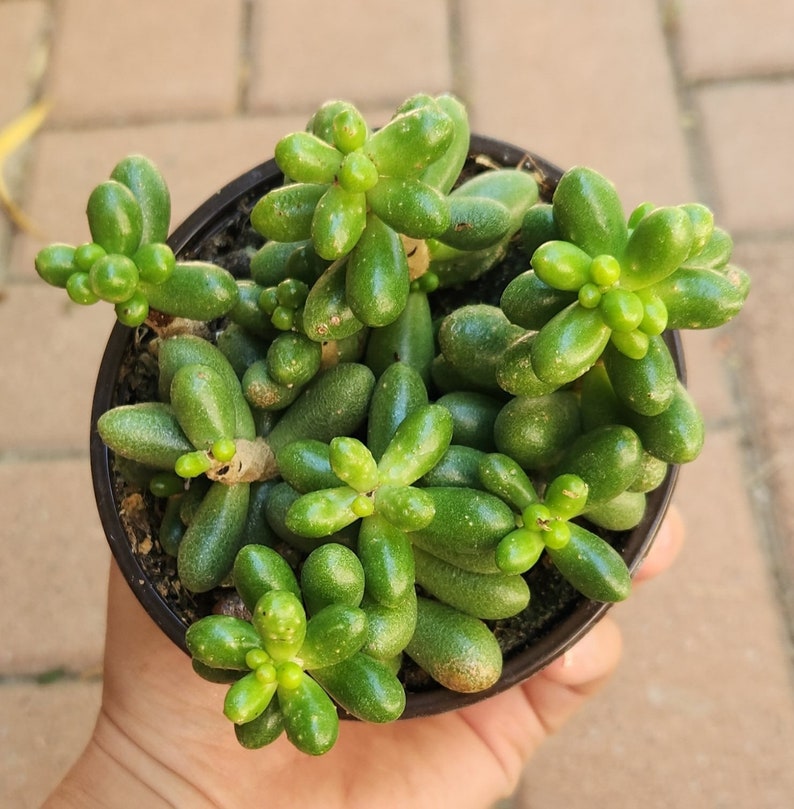
Source: Etsy
Sedum hernandezii, with its captivating appearance and low maintenance requirements, is a delightful addition to any succulent collection. By following the care guidelines outlined in this comprehensive guide, you can ensure that your Sedum hernandezii thrives and remains healthy for years to come. Remember to provide it with bright, indirect light, well-draining soil, and a balanced watering schedule, and you will be rewarded with a stunning succulent that will bring joy and beauty to your space. Happy gardening!

